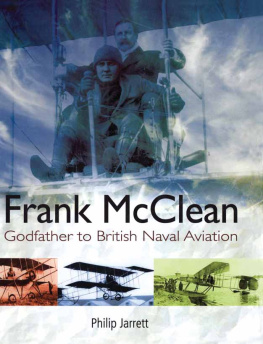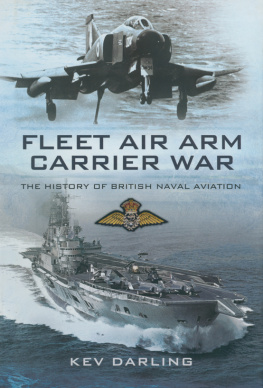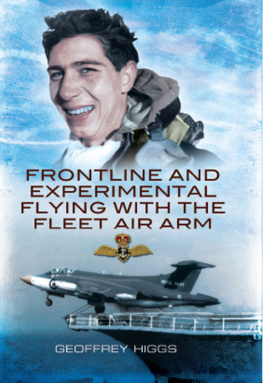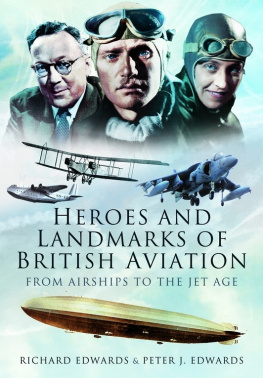Before the Flying Midshipmen Association wasdecommissioned in 2011, one of its stated goals was to support the education ofAmericas teenagers by encouraging them to seek careers in aviation. To thatend, the Association partnered with the USS Midway Museum in San Diegoestablishing the Flying Midshipmen Youth Aviation Training Program, a uniqueopportunity for teenagers to enroll in an annual class designed to prepare themfor passing the written FAA Private Pilot knowledge test.
In compiling this book the editors had a clear objectivein mind: 100% of the proceeds from book sales will accrue to the FlyingMidshipmen Endowment Fund created exclusively to support the Youth AviationTraining Program in perpetuity aboard the USS Midway Museum.
Foreword
Flying stories have drawnpeople the world over into adventures in reading and many into the cockpits ofairplanes. Consider the classics, Antoine de Saint Exuprys Wind, Sand andStars, Ann Morrow Lindberghs North to the Orient, and Ernie Ganns Fateis the Hunter, all of them memorable tales of high drama that capture theimagination. The great flying novels of World War I, The Diary of an UnknownAviator and Falcons of France, launched many young men growing up inthe 1930s and 1940s into a life of flying. That was before the treasure troveof flying stories from World War II and beyond that were made into movies andbooks. Flying stories are wherever you find them. There are gems to be found.Here is just one of my favorites, The Milk Run, buried in Micheners Talesof the South Pacific. The list is endless.
Nearly three years have passed since an audience of agingNaval Aviators witnessed the closing of an era at a ceremony in the NationalNaval Aviation Museum at Pensacola, Florida. Their fraternal organization, theFlying Midshipmen Association, was decommissioned. Never again would theygather in such a large group to trade their stories and talk about flying. Thechronicles of all the years they spent in the cockpits of Navy aircraft wouldnow go into an archive, stored among the musty records of the Museum. In a fardistant era some researcher might come across them and perhaps even extract astory or two, and then again, maybe not.
For many years the editors of The Aviation Midshipmen LOG,the biannual newsletter of the Association, encouraged the readership to submittheir stories for publication. Those stories, three hundred of them, werescattered among the treasurers reports and announcements and other materialfound in forty-six issues of the LOG. In the years to come, who would everthink to pull them together into a single document to be seen and read andjudged by the general aviation community as to whether or not they would passthe test of a good flying yarn. That would be a job, not for futureresearchers, but for those who still have a living memory of the events. Theseare our stories. There are gems to be found in Once a JockAlways a Jock!!
Earl Rogers, Sacramento, California, March 2014
Introduction
The Aviation Midshipmen Story
The year was 1946, World War II had ended, anddemobilization was in full sway. The Navy was standing down its veteranofficers and aviators. Concerned with the potential shortfall, the Secretaryof the Navy tasked Assistant Chief of Naval Personnel Rear Admiral James L.Holloway, Jr., to chair an influential, ten-member board, charged withrevitalizing acquisition, education, and retention of officers in the postwarUnited States Navy.
Realizing that the Naval Academy could not provide thenumbers of officers required, the board devised a trailblazing plan to use thenations colleges to train regular naval officers to meet the Navys futureneeds. The plan, soon commonly known as the Holloway Plan, was unanimouslyapproved by Congress and signed into law in August 1946. The plan devised twomain tracks: the standard four-year course for line officers and the morefamiliar seven-year Naval Aviation College Program (NACP) for naval aviators.
NACP was devised to entice new enlistees into the Navy byoffering two years of college followed by naval flight training. If successfulin training, the newly acquired officer candidates would be assured theircoveted Navy Wings of Gold, a commission in the U. S. Navy, a promise of twoadditional years in which to complete their college education, and the grandopportunity to enjoy a 20 to 30 year career as an officer in the regular Navy.
From inception, NACP was a success in attaining its goal. Those already in the training pipeline in 1946 were afforded the opportunity totransfer to the Holloway Plan with the enticement of becoming regular Navy. Enrollees in the Navy V-5 college program were converted to the new programwhile the majority of new trainees were enlisted right out of high school. During the period 1946 through 1950, just under 3,000 individuals, ages 17 to24, were appointed Aviation Midshipmen, USN, for two years while undergoingnaval flight training. The training was arduous and it is estimated that only2,100 (70%) successfully completed and were awarded their wings and designationas Naval Aviators. Graduates of NACP went on to participate in every majoraviation event from the Berlin Airlift to the conflict in Vietnam. In fact, NACP was so successful that one reason for early termination of theprogram was the inability of the Navy to honor promises made as inducements tojoin.
Perhaps the most unique feature of the program was the twoyears that these future aviators served as Aviation Midshipmen. Serving withthe same rank and pay grade as Midshipmen at the Naval Academy, commissioningas an officer in the Navy would not occur for two years and only aftersuccessful completion of flight training. Early converts to the programexperienced slight variations in time spent as an Aviation Midshipmen. Nevertheless, completion of training and designation as a Naval Aviator tookbetween 15 to 18 months for most. Thus, newly winged First Class Midshipmenwere serving the balance of their appointment while assigned to their firstfleet aviation squadron. And this is where they first experienced identityproblems and administrative inequities like few others.
















